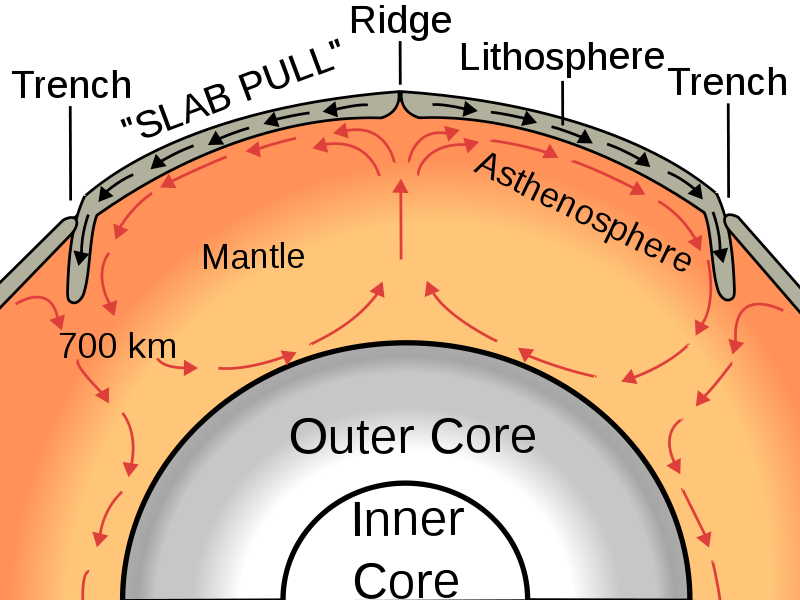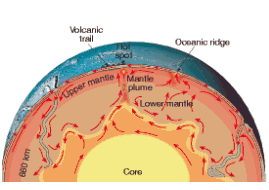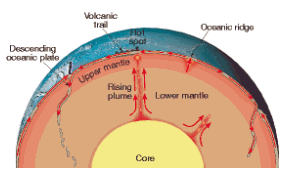
The mantle is a layered part of the earth, which is located just beneath the crustal layer of the earth. The Earth’s crustal surface (lithosphere) rides atop the asthenosphere. The asthenosphere is the upper layer of the Earth’s mantle, in which there is relatively low resistance to plastic flow and convection is thought to occur. While the lower part of the mantle is very hot and molten. Mantle convection means the movement of the mantle as a result of the transfer of heat from the white-hot core to the solid lithosphere. In the process of convection, the mantle gains heat from below and loses it from above. This transfer of heat causes the lower material of the mantle to move upward, resulting in the upper material moving downward. The continuous movement of the mantle is known as “Mantle-Convection”.
The convection currents transfer the hot and molten magma to penetrate up into the brittle lithosphere and sometimes even cross the crust at weak places like plate boundaries and hotspots. Similarly, it is due to the process of convection, that the denser, and cooler material from the crust is shoved down into the Earth’s interior through the process of subduction. Apart from the eruption and submergence of the magma, the process of convection also moves the tectonic plates (crustal plates). There are three types of movements in the crustal plates; (i) if two crustal plates move apart from each other, it is known as divergent motion, (ii) if two plates move towards each other, it is known as convergent motion, and (iii) if two plates move across each other, it is known as transverse motion.
Types of Convection
During the late 20th century, there was controversy among the geophysicists on whether the convection is layered or integrated. Although the elements of this debate still exist, however, the results from seismic tomography, numerical simulations of convection in the mantle, and examination of Earth’s gravitational field all support the existence of ‘whole’ mantle convection. The two main types (models) of convection in the mantle are as below;
Layered Mantle Convection:

It is also known as double-layered convection. Some scientists believe that mantle convection is not in a consolidated form. but rather in two-layered forms. The convection in the upper part of the mantle is segregated from the convection occurring in the lower part of the mantle at the transition zone (discontinuity between the upper and the lower mantle). In this model, the subducting crustal material is not likely to reach down to the lower mantle, as well as the plumes from the core-mantle boundary also do not rise too much. This model does not accept that the subducting slabs cross the mantle transition zone and descend into the lower mantle. Therefore the debate about the existence and continuity of plumes persists, with important implications for the style of mantle convection.
Integrated (Single-Layered) Mantle Convection:

This is the model of the convection in an integrated form. It is also known as ”Single-layered Convection”, that a single convection overlaps both the upper and lower mantle. This convection is not affected by the transition zone between the two mantle layers. In this process cold, subducting lithosphere descends from the surface to the core-mantle boundary (CMB), and hot plumes rise from the CMB to the surface. This model is strongly based on the results of global seismic tomography models, which typically show slab and plume-like anomalies crossing the mantle transition zone.
You May Like :